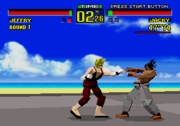 She made it!!
She made it!!After more than 3 years of dedicated training, she passed her shodan (first degree black belt) at Honbu Dojo. I wish I could have been there. First of all, a big Otsukare-sama for her. The belt represents a serious commitment. It shows. She is no longer the scared little girl who showed at the 5:45 am lesson shaking with fear at what might happen to her. Now, I look at her and see a proud, confident, capable lady who commands and deserves respect.
She has mastered her own life by mastering her aikido. She believes in herself and in her techniques, and that in itself is beautiful. Her comment to me was "Now I can walk around town without makeup on. I could never do that before". You said it Little Sister.
You are beautiful and radiant just as you are. No need to change a thing.
It has been a very long time since I got my first black belt (20 years to be exact), and I will never forget that feeling. I was different, but it was hard to explain. Somehow, my life had a certain intensity that it didn't have before. I have never forgetten that the magic is there, but it is really refreshing to see it happen to someone, day by day. Going forward she will be a great teacher, because she knows the value of hard work and the commitment needed to be good at aikido.
So what happens next? Here are some random thoughts my teacher gave me 20 years ago...
the invisible belt - once you put that black belt on, it never comes off again (metaphorically of course). You are a black belt 24 hours a day, no matter where you are. It is a constant burden of reponsibility that you are now strong enough to carry. Bear it with pride.
leadership - the road to black belt should include the experience of looking after your juniors and being a role model to them, long before you ever put that belt on. Now it is implicit. They will look to you as an example of The Way. You must give 100% to make sure that path shines true and clear, and to never disappoint their dreams of what and who a black belt should be. You will be a part of them changing their lives. Get ready for it. You are living proof of what can be achieved through hard work and commitment.
relentless and unforgiving - the black belt opens the door to a new stage of your training. Now you can no longer forgive yourself for anything less than your personal best. You must deliver 100% every moment, on the mats and off, and are expected to hold yourself and your aikido to higher level of awareness and perfection than before. Getting there showed you have heart; going forward you must show consistency. That will require you to be relentless and unforgiving in your own training.
mercy - as much as you must be relentless and unforgiving on yourself from now on, you must never fail to show mercy and have understanding for others who have not been called to The Way yet. The struggle to this milestone has contained many obstacles and hardships, and you must never forget that others also face them every day. You must have strength in excess to help them get through. Draw from your energy and give it to them.
rock of strength - in traditional schools, a student was not even entered into the dojo register until shodan. Before that you just didn't even exist. Having been listed on the books, now you are the kind of person the teachers should be able to build a strong school on. You are a foundation stone. Don't forget it.
With great power comes great responsibility. It is not given lightly and should not be taken lightly. There is real magic here, and real magic, the kind that changes lives, is hard to find these days. Little Sister, you are truly one of my inspirations, one of my heroes - you will change the lives of many. Ganbatte!!




